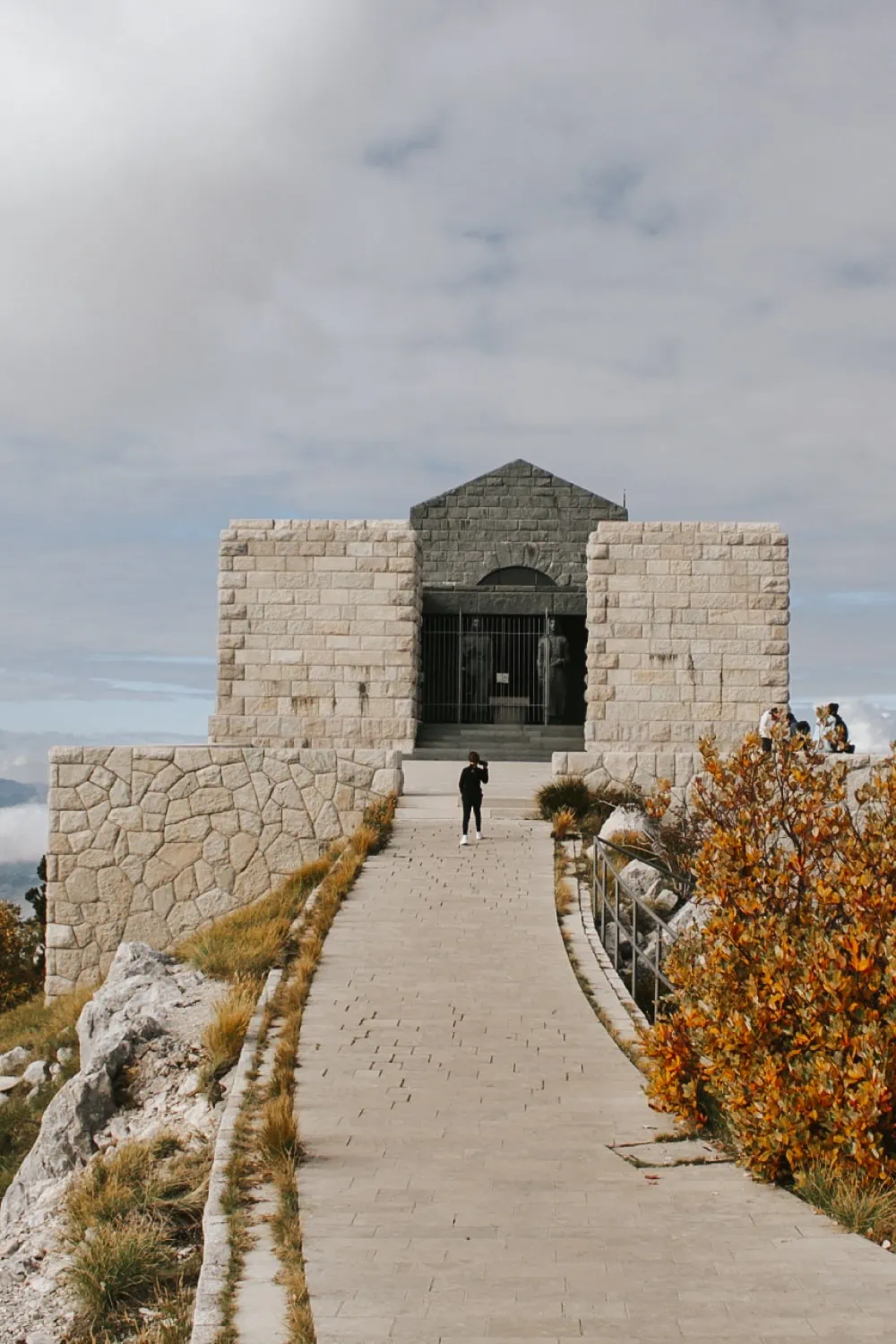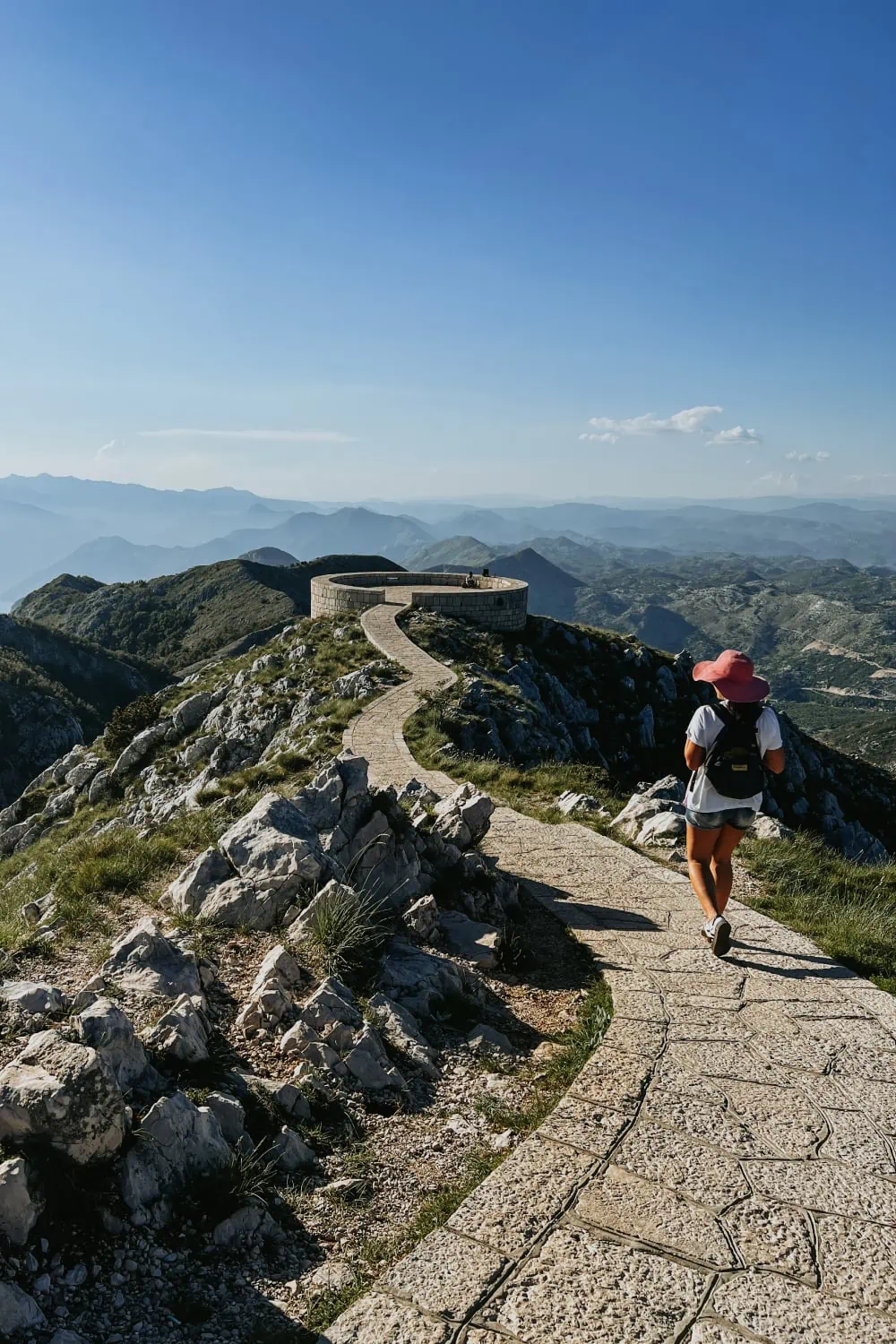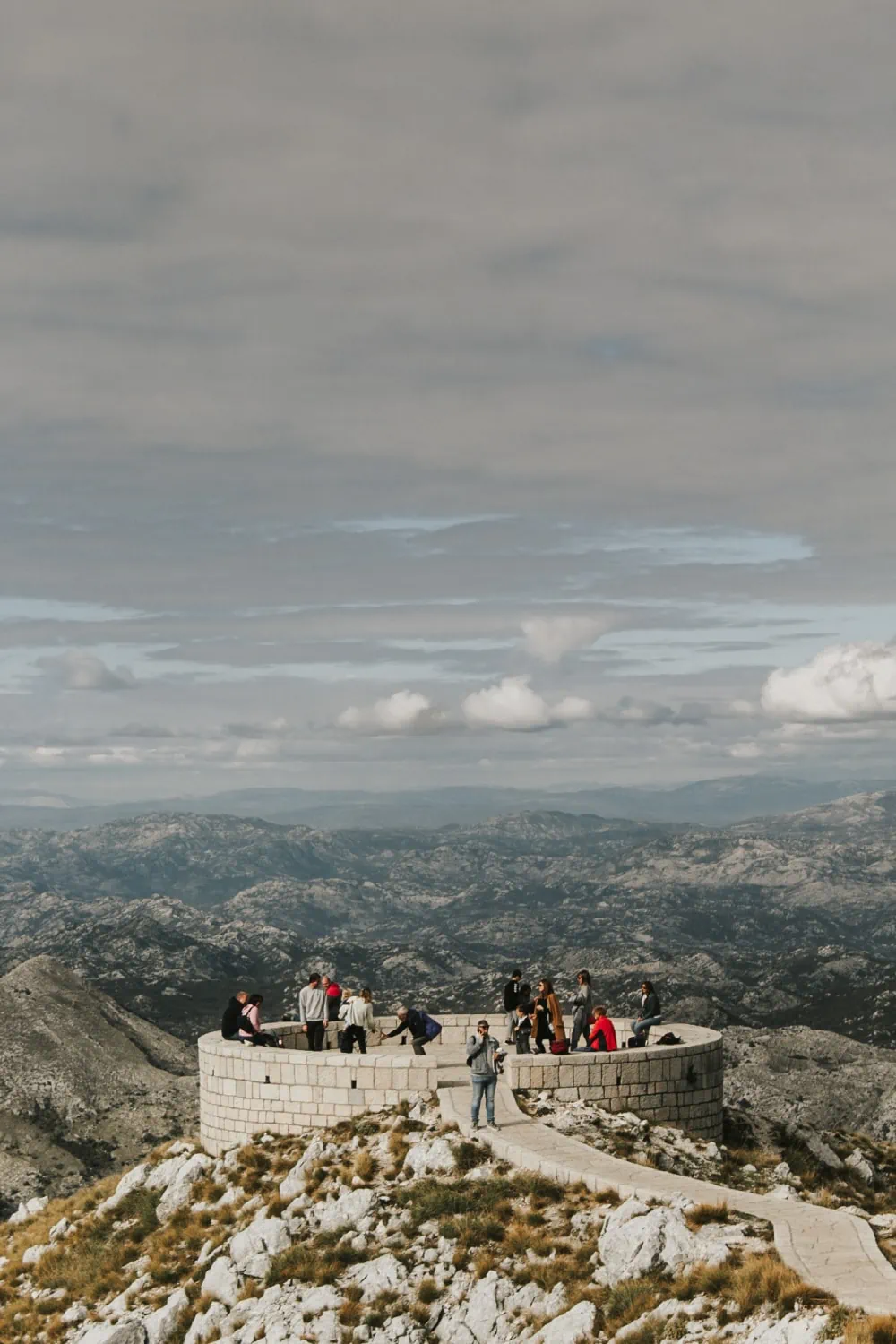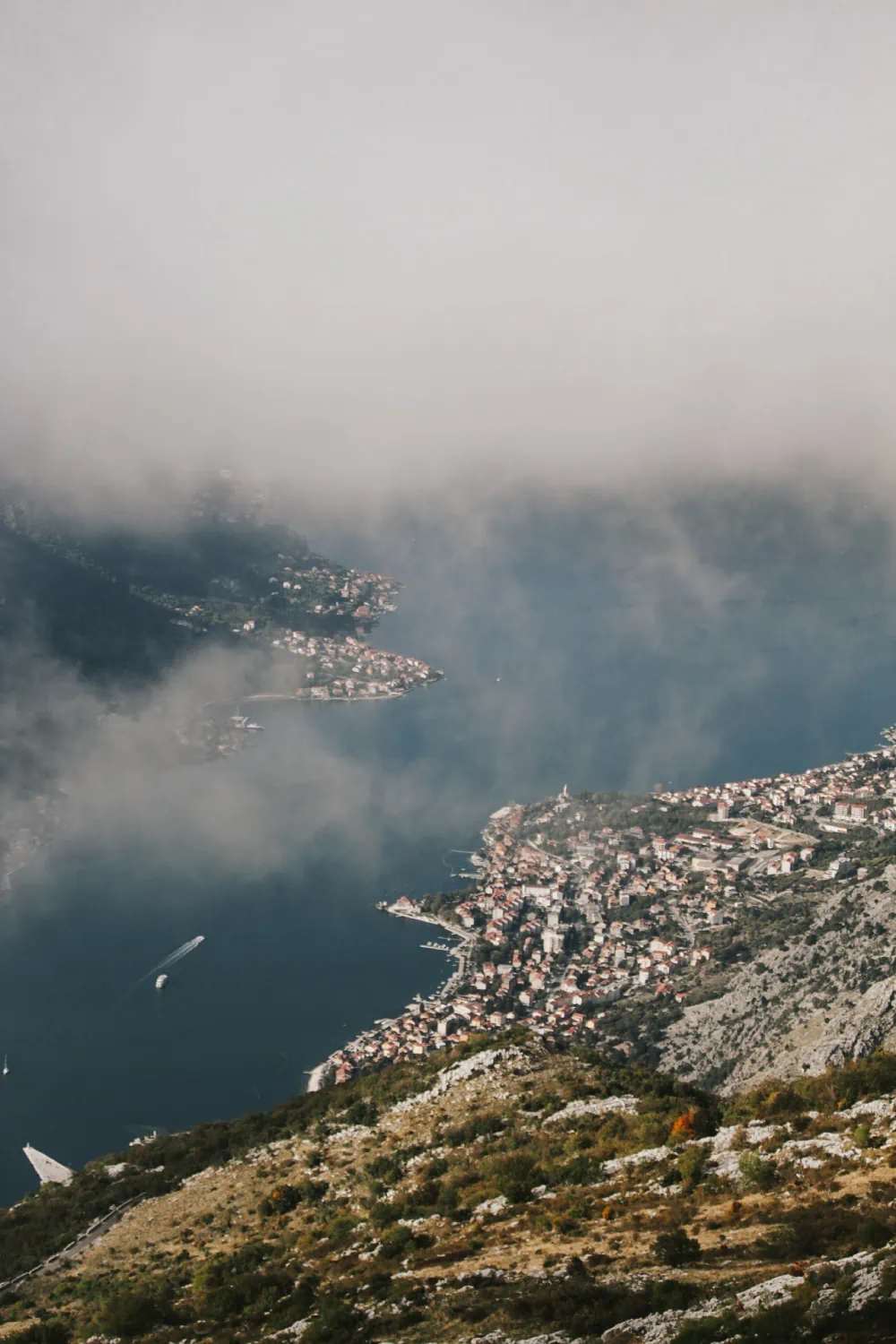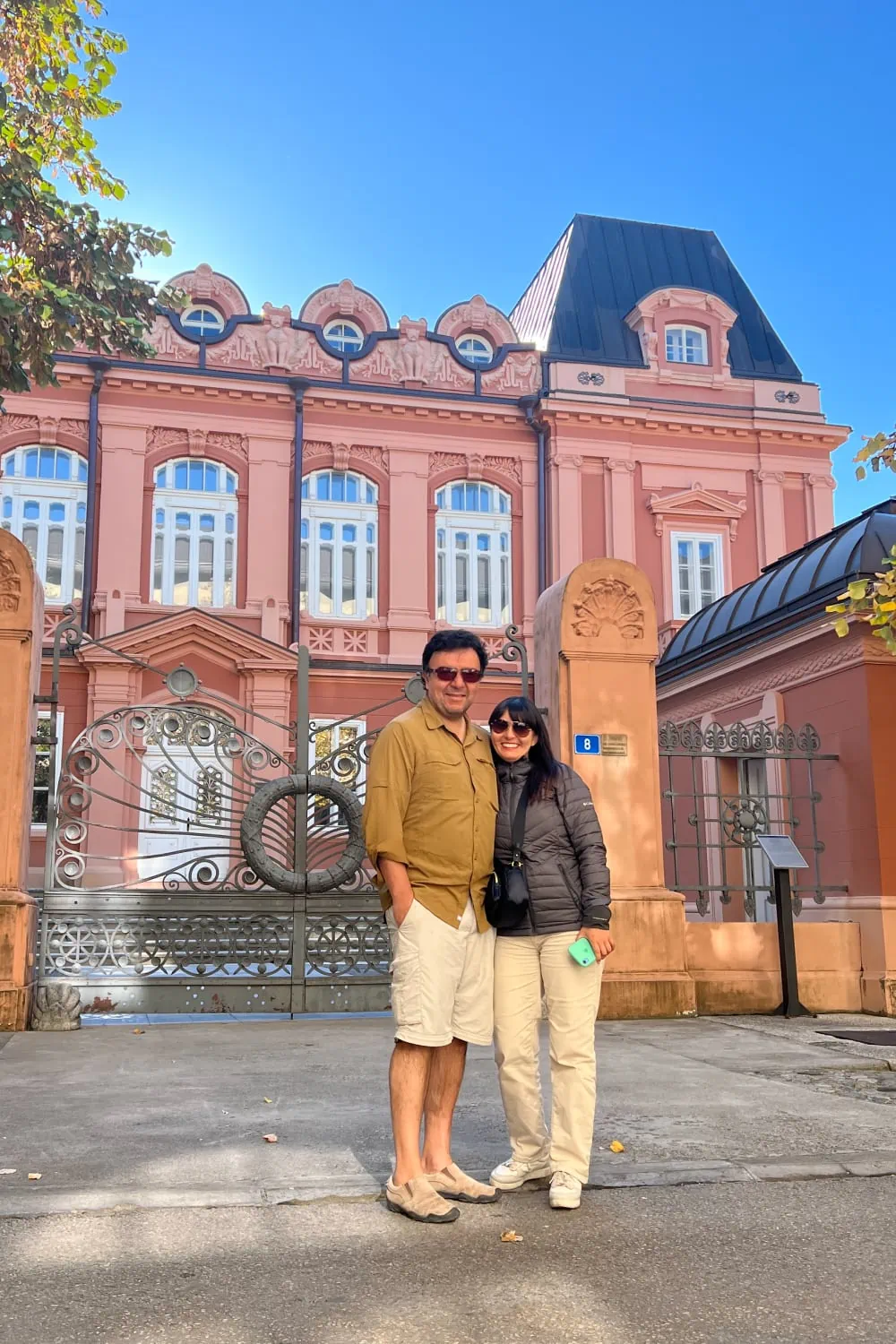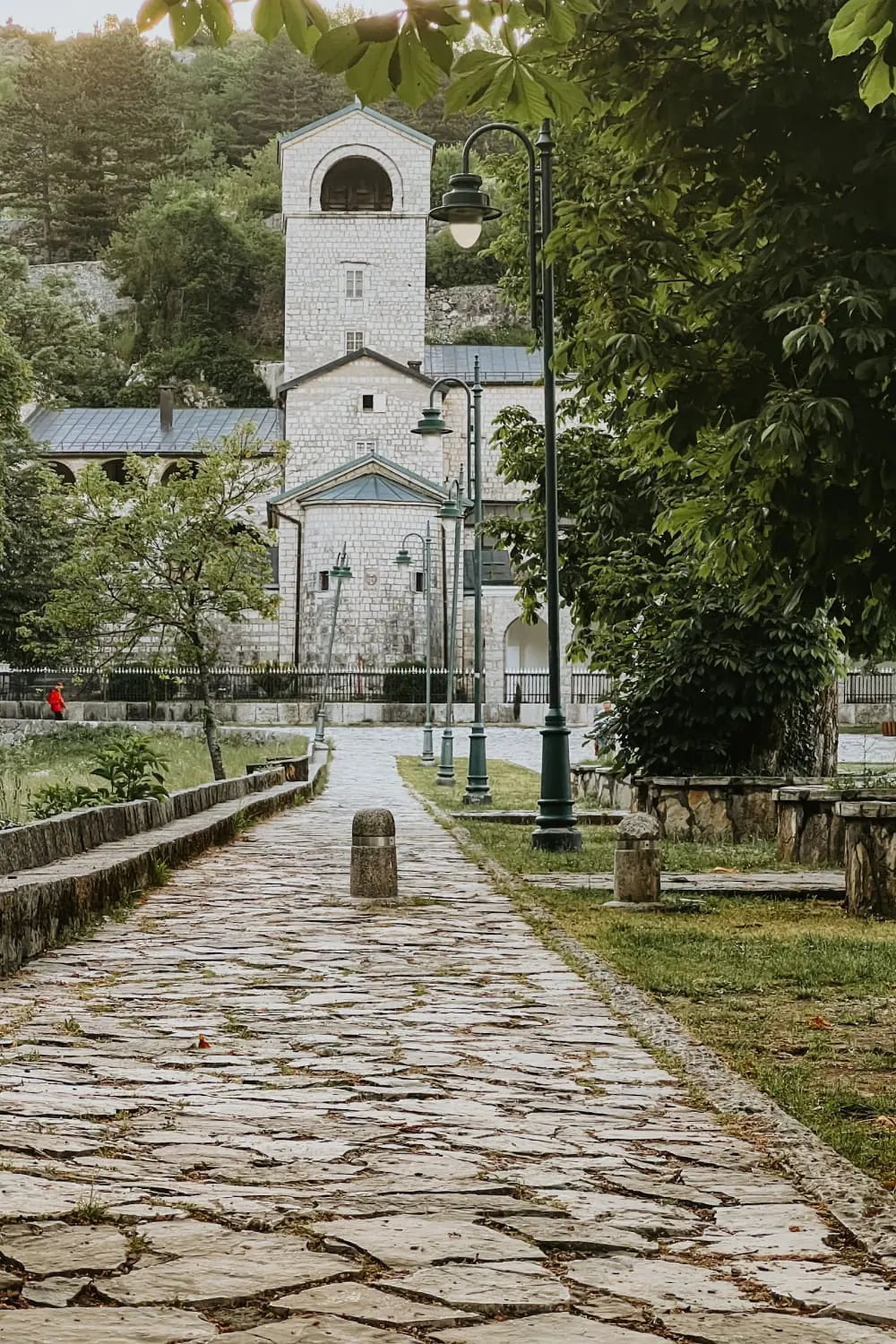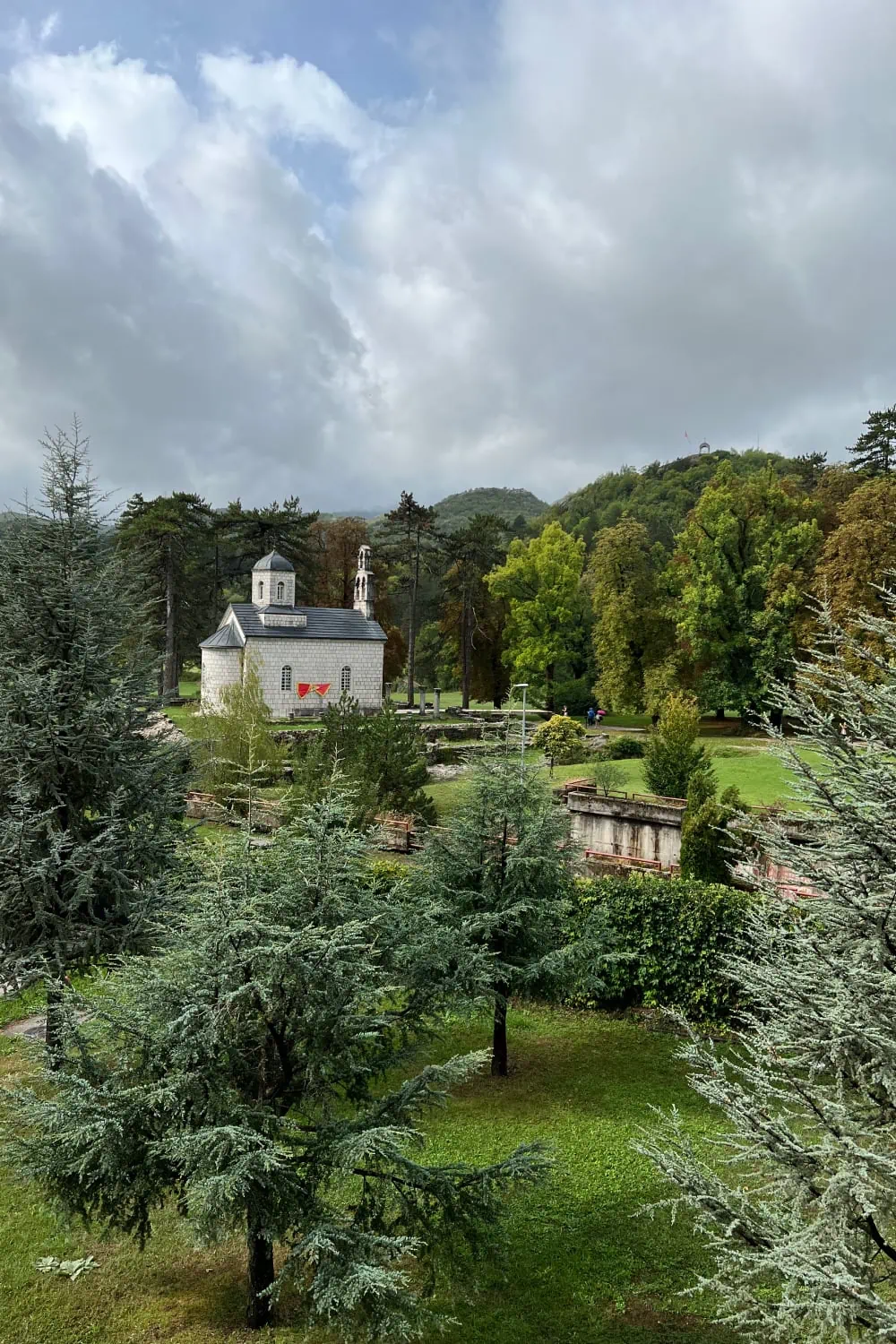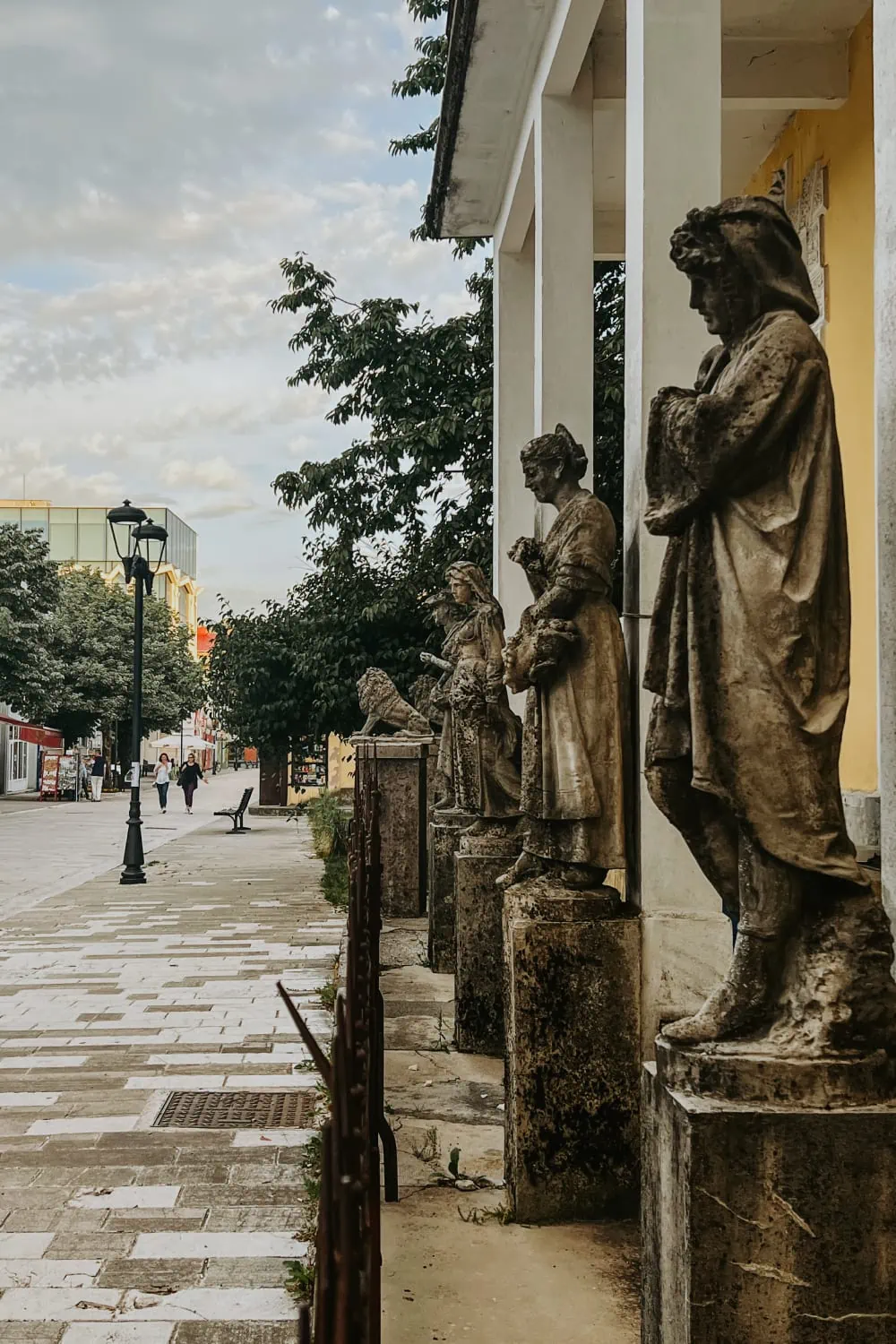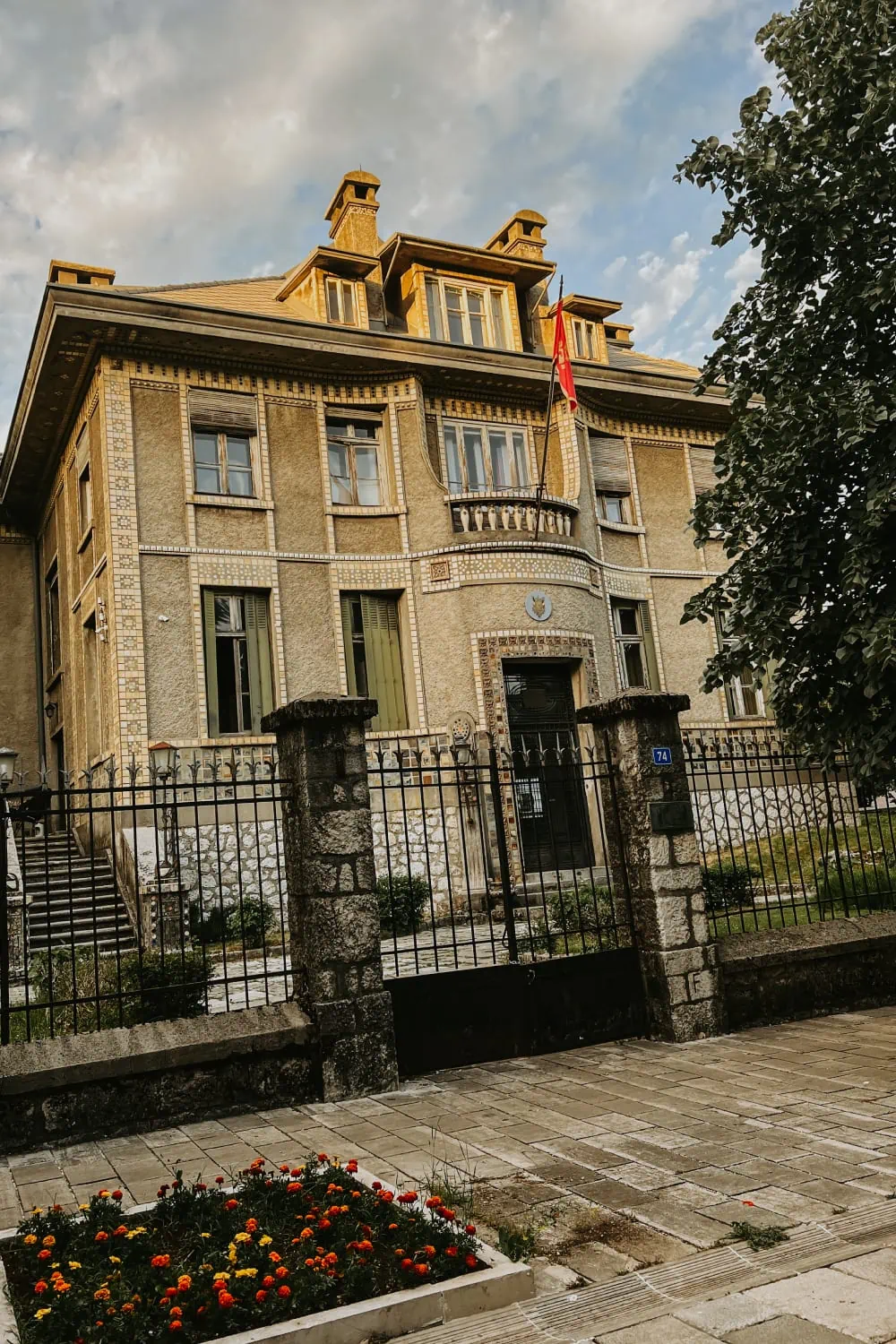When in Montenegro
Cetinje, a sense of identity tour
Around 80% of this beautiful land is covered by mountains, which are characterized as an extremely rugged and and extensive terrain with the average altitude of 2,000 meters or 6,562 feet. These mountains belong to the European mountain range called Dinarske Planine (Dinaric Alps).
When in Montenegro, visit Cetinje to see a large-scale map of Montenegro to better understand the mountainous region. Together we’ll visit Biljarda (Billiard House) and see a relief that illustrates the contours in elevation of the mountainous region of Montenegro. And the scale is 1:10,000! It was built in 1916 by Austrian army with the help of the Montenegrin sculptor Marko Brežanin.
Cetinje
On this tour we’ll find out why Cetinje is the symbol of cultural and spiritual heart of the country.It’s a quiet little town with many monuments, which offers a unique and calm experience that can only be found here. At the start of this tour where our attention is at its peak, we begin with visiting important cultural and historical assets. Since this is a tailor-made tour, we’ll provide for you some interesting information about some museums that charge admission fees, and once we arrive there, you’ll decide whether you want to visit them or not.
Cetinje Monastery
Built in 17th century and renovated in 1923, this monastery represented a cultural, spiritual and political life of Montenegro. Being a small group, we’ll be able to visit the reliquary in the church, which holds the remains of Sveti Petar Cetinski (St.Peter of Cetinje), and two revered Christian relics: Saint John the Baptist’s right hand, and a piece of the Holy Cross.
Biljarda
Sounds familiar? Yes, in Biljarda Palace you can find the large-scale map of Montenegro that was mentioned earlier in this post. This palace is the former residence of Petar II Petrović Njegoš, the ruler of Montenegro and the Cetinje Bishop of the Ortodox Church. He is also the most loved historic figure among Montenegrins to whom we’ll dedicate more words further in this post. Biljarda was built in 1838, today is one of the most visited museums that holds a collection of compositions written by Njegoš. His personal belongings, money, books and weapons can also be found here.
King Nikola’s Palace
Across Biljarda Palace in the main square, we’ll find ourselves in front of Dvorac Kralja Nikole (King Nikola’s Palace). King Nicola was a very important ruler who transformed his small principality into a sovereign European nation in 1878. His palace is an important historical monument, a museum with thousands of pieces of archeological, ethnographical, historical value with a collection of flags, old photographs, awards, weapons, stamps, coats of arms and many more artifacts.
What if we told you that before the Euro, Deutsche Mark and Dinar, there was actual Montenegrin money? The government introduced Montenegrian “Perper” from 1906 to 1916 during the short-lived Kingdom of Montenegro. Perper has no direct translation, but one understands it as paper money and coins. Nowadays, Perper has great monetary value. Did you know that at numismatic auctions a golden coin of 100 Montenegrian Perper reaches a value of up to 35,000 euros? Perper can be found in this museum or in the Muzej Novca (Museum of Money) a 10-minute walk from King Nicola’s Palace.
The Government House - National Museum of Montenegro
Vladin Dom (The Government House) was built in 1910 and in the twentieth century it was actually the largest building in Montenegro. During its existence, the Government House contained, in addition to the Montenegrin government itself, parliament, post office, telegraph, printing house and theater. Today it is a National Museum of Montenegro where visitors can learn more about the social, cultural and political past of Montenegro: from the Paleolithic to the present day. The Government House preserves the Icon of Our Lady of Phileremos, being one of the most revered relics in the Christian world and a masterpiece of universal value and thus stored as such in the Museum of Art of the National Museum of Montenegro.
Cetinje Historic Core
Since we can’t reveal everything, we’ll just assure you that there are many things and places that can be seen and visited in this small town. There are 14 buildings of diplomatic mission to the former Kingdom of Montenegro that are converted into libraries or faculties. The remains of the Manastir Crnojevića na Ćipuru (Crnojevićs’ Monastery at Ćipur), the theatre building –‘Zetski Dom’ (House of Zeta), the hospital ‘Danilo I’, Plavi Dvor (the Heir to the Throne Danilo’s Palace – Blue Palace), Crkva na Ćipuru (the Royal Chapel – Ćipur), the Bishop Prince Danilo’s Tomb at ‘Orlov Krš’ (Eagle’s Rock), Vlaška Crkva (Vlach Church), the Pharmacy in Njegoševa Street, the building of the first Montenegrin bank, Djevojački Institut – the building of the former Girls’ Institute of the Empress Mary.
Village Njeguši
Having visited the historic core of Cetinje, we then head to the Njeguši village where you can have a taste of true Montenegro as we say it. Leaving the city, in a 20-minute ride, we arrive at our destination. Close to the Lovćen National Park at the 900 m above the sea level, this village is known for being the birthplace of Petrović – Njegoš dynasty that ruled this country from 17th century to 1918. The simplicity, the nature and the authentic, traditional, folk architecture is something that you’ll enjoy here. But the real beauties of this place are famous Njeguški pršut ( Njeguši smoked jam) along with Njeguški sir (Njeguši cheese). They are mostly accompanied with either red wine or their famous drink Medovina, which is a mix of red wine and honey. This will certainly be a gastronomic pleasure that you will take with you along the journey as we move towards the Lovćen National Park.
Lovćen National Park and Njegoš Mausoleum
For the end of our tour, we prepared for you a breathtaking view to be able to understand why the romantic poet Lord Byron in 19th century wrote, “At the moment of the creation of our planet, the most beautiful merging of land and sea occurred at the Montenegrin seaside.” Mount Lovćen has a special place in the heart of all Montengrins, being the final resting place of the country’s greatest leader and poet, Petar II Petrović Njegoš. The mausoleum that we’ll see stands over all other historic monuments in Montenegro at 1660 meters, making it one of the tallest mausoleums in the world. Be aware that there are 461 steps that lead us to the mausoleum. We promise a unique experience with outstanding views and more stories about the birth of this nation and the brave hearts of these people.
Duration
8 hours
Difficulty
Moderate walking
Language
English, Italian, Spanish, Montenegrin
What makes it special?
- Being a private tour, we’ll see all the hidden gems in Cetinje
- Panoramic road to Njeguši village in small car
- Eating fruit with a view in Lovćen National Park
What's included?
- Licensed Tour Guide
- Transportation
What's not included?
- Individual costs
- All meals and drinks
- Entrance fees for museums (entrance fees for all museums is 20€ per person, including Njegoš Mausoleum)
- Entrance fee for Lovćen National Park, 3€ per person
Pricing
1 person
185 €
2 persons
208 €
3 persons
237 €
4 persons
256 €
Discount
20% off for children under 12 years
Book now
Please note
WHAT TO BRING?
- Local money € / cash (not all beautiful places on this tour accept card payment)
MEETING POINT
Our meeting point will be at Topolica Sports Hall in Bar. You can request a pickup from any destination in Bar for free.
*If you’re in another town and don’t feel like coming to a meeting place, inform us and we’ll start this tour where it suits you. No additional charge for transportation will be for Cetinje, Budva, Virpazar and Podgorica. Additional charge will be for all other towns. *
PERSONAL INFO
You will have to send us your passport or ID information 24 hours before the start of this tour.
LUGGAGE
Only back packs and travel bags allowed, for bigger luggage contact us.
ANIMALS
Only small size pets allowed. It is important to inform us about your pet before the tour.
LANGUAGE
The tour can be bilingual or trilingual (English, Italian and Spanish) which is a perfect chance for you to have a cultural exchange in Montenegro.
